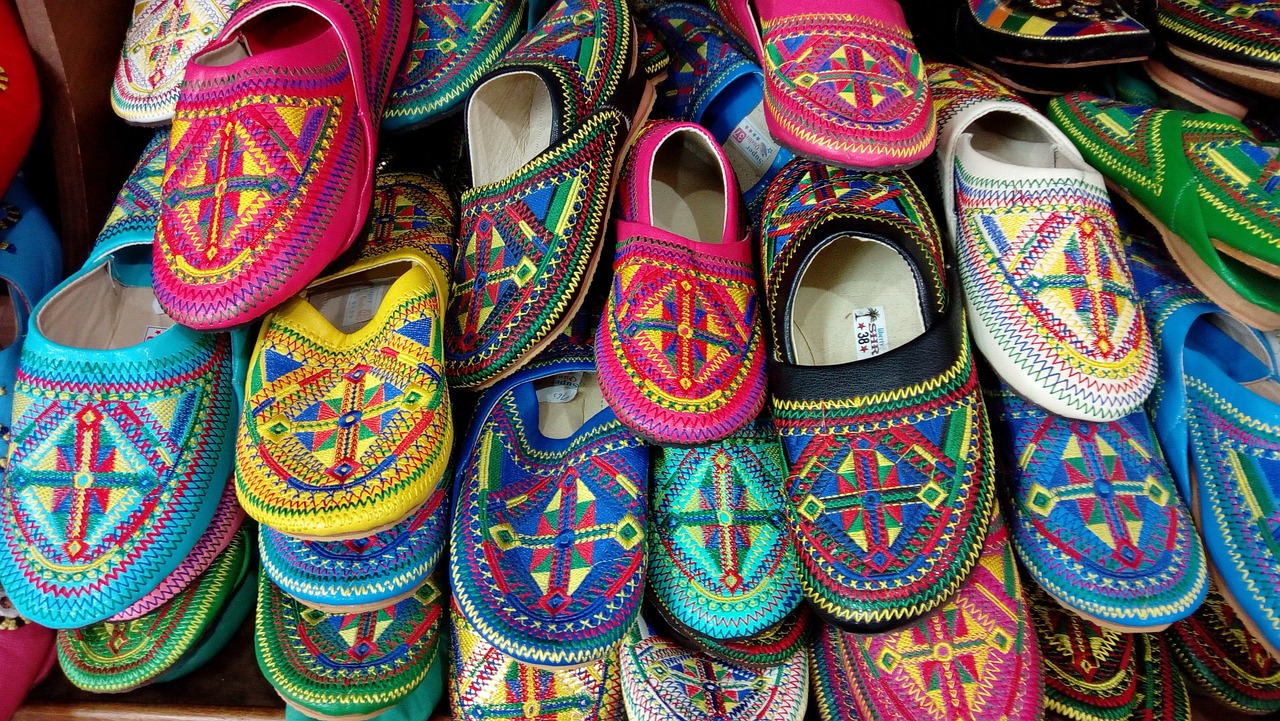
Slippers are shoes that usually do not have a heel.
Babucha is a shoe that generally lacks a heel .
The Persian word pāpuš came to Arabic as bābūš , which in turn came to French as babouche . Its original meaning was "shoes for the feet ." The term passed into Spanish through cultural and linguistic contact between the Arab and Spanish peoples in the Iberian Peninsula during the Middle Ages. In some regions of Spain and Latin America, the term may have local variations, such as babucho or babuche .
General characteristics
Slippers are slippers that end in a point and are open at the other end . They are generally made of plastic or leather and there are models of multiple colors and designs.
Slippers are often worn in North African and Asian nations. They are usually used by Muslims , whether men or women. In many countries, the artisanal production of slippers is part of the cultural wealth. The traditional Arab souks are usually places where this type of footwear is sold.
Beyond its link with Arab culture, slippers spread throughout the world. Nowadays, many people of other religions wear slippers because of the comfort they provide and because they are an object valued by fashion.
Guys
There are different styles and variations of slippers that have been used in various cultures throughout history. Some of the more well-known types include:
- Moroccan slippers : They are a type of traditional footwear from Morocco and other North African countries. Moroccan slippers are soft leather shoes, usually without a heel, with a rounded toe and a folding back that can be folded back;
- Turkish slippers : Also known as yemeni or kundura , these are traditional slippers from Turkey and other Middle Eastern countries. They are usually made of soft, flexible leather, with a rounded toe and a flat sole;
- Egyptian slippers : they are similar to Moroccan and Turkish slippers, generally made of leather and without a heel. They often have decorative details and are popular as casual footwear in Egypt and other parts of North Africa;
- Modern slippers : In current fashion , the term slippers can refer to a type of footwear inspired by traditional ones, but with more modern designs and materials. These shoes can have various colors and patterns, and are used both indoors and outdoors.
Wide pants
In some regions, on the other hand, babouch is the name given to wide pants that seem to have excess fabric , which makes them look loose and wrinkled in the ankle area.
Slipper
The adverbial phrase a babucha , used by Argentines and Uruguayans, refers to lifting someone on one's back or shoulders, carrying them on one's back . Children usually go to their parents' slippers when they are little, just as on other occasions they go to upa .
Abukassem slippers
The work Las babuchas de Abukassem is part of the collection of popular stories from the book One Thousand and One Nights . In some versions of it, it is found under the name History of the Caliph Hakem, His Vizier and the Shoemaker .
The story tells the story of a poor shoemaker named Abukassem, who lives in Baghdad. One day, Caliph Hakem and his vizier come to his shop to have his old slippers repaired. During the visit, Abukassem complains about his poverty and regrets not being able to lead a life like that of the caliph, of comfort and wealth.

In The Slippers of Abukassem , a humble shoemaker and a caliph exchange roles for three days.
The caliph, intrigued by Abukassem's simplicity and happiness, proposes that he exchange roles for three days: the shoemaker will become the caliph, and vice versa. Abukassem accepts the deal, and then experiences the life of luxury and wealth he desired.
At the end of the three days, the caliph and Abukassem meet again: both have learned valuable lessons about life. The caliph realizes that happiness does not lie solely in material wealth, and Abukassem understands the importance of gratitude and contentment with what he has.
